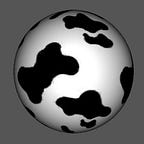Will the top block slip off?
Physics Journal: Don’t Let the Blocks Off
Two blocks of mass m and M, and a spring with spring constant k are on a horizontal, frictionless surface. The coefficient of static friction between the two blocks is μ. Find the maximum possible amplitude of simple harmonic motion such that the top block does not slip.
First thoughts
We know that if the the blocks are displaced by x and released, they will be in simple harmonic motion about the equilibrium.
First off, what does ‘not slip’ really mean in terms of the motions of the blocks? ‘No slipping’ tells us that the top block must be moving together with the bottom. So the question is really asking what is the farthest the spring can be stretched if the two blocks are to have the same acceleration a.
So drawing a force diagram seems promising.
Diagram
We know there is a frictional force between the top and bottom blocks.
Let x be the maximum amplitude. If the blocks are displaced by x to the right, the tension in the spring F will tend to move the bottom block back to the equilibrium position, that is to the left.
The friction Ff on the bottom block exerted by the top will act in the opposite direction, to the right.
By Newton’s 3rd Law, the friction on the top block by the bottom will act to the left and have the same magnitude Ff.
Consider forces on the top block only (in red)
The magnitude of the frictional force depends on the normal force on the block, which equals its weight as the block does not accelerate vertically.
The resultant force is friction so by Newton’s 2nd Law,
Forces on the bottom block only
The resultant force on the bottom block is the tension in the spring minus the friction.
By Hooke’s Law, the tension F is directly proportional to the extension x.
Substituting for Ff and a, we can find the maximum amplitude x.
Any amplitude greater than this would cause the top block to slip off.
I started keeping a ‘Physics Journal’ in the hopes of solving physics problems regularly and sharing my thought process with anyone interested. Who knows, maybe you might be inspired to delve deeper into the depths of physics?
Aphysicist’s approximation of a cow. In an alternate universe, I am a college student studying maths and physics. If you enjoyed this story, don’t hesitate to follow and give it a clap!
